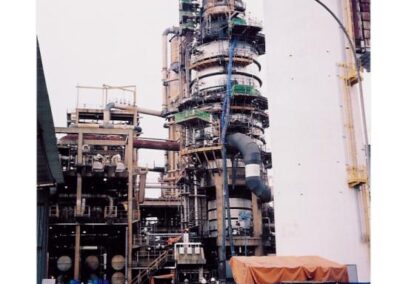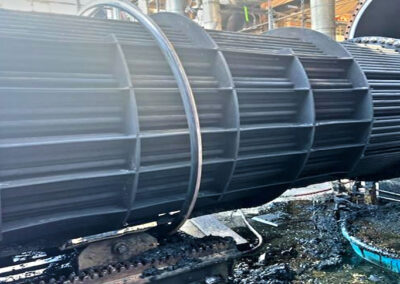Case History
World scale olefins plant experienced energy savings of approximately 2.6 mmbtu/hr and decreased fouling factor average from 0.047 to 0.005 after chemical cleaning
Results Achieved
Within 24 hours all
benzene / LEL levels were zero
Benzene and LEL levels in the
API separator dropped
Energy savings of
approximately 2.6 mmbtu/hr
Chemicals Utilized
Award-winning asphaltene dispersant and anti-foulant
Rapid absorption and encapsulation of vapor-state hydrocarbons
Effective in the cleaning of scale such as barium sulfate, silicates, and various other scale deposits
A world scale olefins plant scheduled an outage to decontaminate its operating equipment prior to conducting maintenance work.
The plant’s production capacity was negatively impacted by debris accumulation; chemical cleaning was scheduled to increase production. The site had used chemical additives in past outages and was dissatisfied for two main reasons: (1) LEL and benzene levels would rise once maintenance activities would commence, which required re-steaming and (2) the previous product performance was marginal.
Because we had performed benzene encapsulation in other areas of the facility, the client requested we consider this application. Their requirements were to bring the LEL level below 2% and benzene concentration under 0.5 ppm, to have the units ready for hot work, to not impact waste water operations, and to accomplish the degassing/decontamination within 24 hours. Following the organic decontamination, the plant wanted equipment typically fouled with water-born scales to be chemically cleaned to improve product through-put and heat efficiency.
The process areas to be cleaned and decontaminated were the oil quench system, the quench water system, the depropanizer tower, the caustic wash system, and all associated exchangers and piping. As these units would have different deposits, we knew we could not use a “one size fits all” approach. Samples were taken, laboratory analysis was performed, system dynamics were explored, and utility availability was determined. Our staff, working with the clients engineers and operations personnel, determined chemistries and application methods to accomplish their goals.
Prior to our arrival, the client drained the hydrocarbons and used water to float any residual product. Our field crews arrived on site and introduced/circulated our chemical products. FQE® LEL-Vapor, FQE Solvent-H, and FQE Scale-Solv were used in different concentrations for each system.
Within 24 hours all benzene and LEL levels were zero. Maintenance activities were able to be started immediately and were maintained, as benzene/LEL levels did not rise. Upon draining the solution, the client was pleasantly surprised to find that not only did the solution not generate any foam, but that benzene/LEL levels in the API separator also dropped, allowing faster flushing of other process units not in the cleaning circulation.
After the successful organic debris decontamination was completed, FQE Scale-Solv was circulated through the equipment in water service. Exchangers, condensers, quench water system, and all connecting piping were treated with FQE Scale-Solv to remove inorganic scale fouling. The scale fouling was composed of various iron salts, carbonates, sulfates, and silicates.
Following the chemical circulations for descaling, the equipment was rinsed and—after inspection—put back into service. Inspections on heat exchangers were acceptable with subsequent improved U-values, increased duty, and a decreased fouling factor average of 0.047 to 0.005. The improved performance was reported, as well as energy savings of approximately 2.6 mmbtu/hr.



